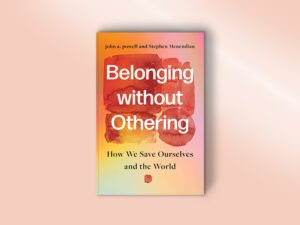
While inflation in food and gas prices make headlines, many find their purchases are made more expensive by bank account fees. A single unexpected expense, or a shortfall in income, can create a snowball of overdraft fees, triggering a $35 bank fee and multiple other fees per day.
Overdraft fees are one of many banking features that produce inequitable outcomes for low-income people and people of color. Many consumer advocates are fighting to establish new protections that would mitigate excessive overdraft practices. Efforts to restrict these fees are part of a growing campaign to make the banking system more equitable, leading to congressional hearings on the matter and a recent committee vote to support the Overdraft Protection Act (HR 4277), sponsored by Congresswoman Carolyn Maloney (D-NY). These important efforts can make a big difference. In the long run, however, we also need community-centered banking models, especially those with democratic structures and close ties with low-income communities, to establish a more equitable and inclusive banking system for all.
Impact of Overdraft Fees on Low-Income People and People of Color
Individual consumers, especially people with irregular income, are hit hardest by overdraft fees. For example, Letitia O’Brien, a 62-year-old retired nurse, told Bloomberg News earlier this year that when she paid $300 for her utility bill and around $100 for a CT scan of her chest, she faced a chain of multiple $36 fees. “Now she was worried that an upcoming grocery delivery could put her back in the same dark place,” the reporter added.
O’Brien is not alone. Almost one in five consumers incur overdraft fees each year, amounting to as much as $15 billion annually. Low-income people and people of color are disproportionately impacted: for example, an analysis by the Financial Health Network found that low- to moderate-income (LMI) households are nearly twice as likely to overdraft as higher income households. Black and Latinx households are also about twice as likely to be charged overdraft fees than white households. The effects on consumers of excessive overdraft fees can be serious. Individuals who overdraft frequently use high-cost loans from payday lenders and loan sharks to pay their overdraft fees, trapping them in cycles of debt.
Furthermore, a 2013 Consumer Financial Protection Bureau (CFPB) study showed that consumers with overdraft protection were three times as likely to face involuntary account closures as those without it. Such closures can push consumers out of the financial mainstream, adding to the number of unbanked people and reinforcing broader banking system inequities. Federal Deposit Insurance Corporation (FDIC) data from 2019 show that 12 percent of Latinxs are unbanked, compared to 2.5 percent of whites, and that 23 percent of those who earn less than $15,000 a year are unbanked, compared to 0.6 percent of those who earn at least $75,000.
The biggest banks are responsible for charging a disproportionate amount of fees. According to CFPB data, “three banks—JPMorgan Chase, Wells Fargo, and Bank of America—brought in 44 percent” of overdraft fees in 2019; however, these banks are not alone in charging excessive amounts of overdraft fees. In 2020, a handful of regional banks were found to rely on overdraft fees for more than 50 percent of their profit.
Congress and financial institutions have taken some positive steps to reform overdraft practices. For example, the Overdraft Protection Act, mentioned above, would restrict banks from charging excessive overdraft fees by limiting the number of fees that can be imposed on customers every year and the dollar amount that banks can charge per transaction.
Further, in response to public pressure and market forces, some financial institutions are improving overdraft policies. Bank of America, for example, reduced its overdraft fee to $10—well below the industry average of $35. Yet many financial institutions have not made meaningful changes, and Congress and regulators can do more.
For their part, banks could reduce the amounts charged for overdraft fees, limit the number of fees, provide consumers with a grace period to cure an overdraft, process transactions in an order that minimizes fees (instead of purposefully reordering transactions to maximize fees), and provide safe and affordable small-dollar loans as an alternative to overdraft.
In addition, Congress could pass the Overdraft Protection Act, and the Consumer Financial Protection Bureau could pursue a rule to limit overdraft fees. The Overdraft Protection Act is unlikely to pass the Senate, but its passage through the House, and the attention it draws in the process, could generate enough political momentum for the CFPB to take up rulemaking on overdraft. Until a host of meaningful changes are made, overdraft fees will continue to reinforce economic and racial inequality and contribute to an inequitable banking system.
Overdraft Fees Mirror Broader Inequities
Overdraft fees are just one of many features within the banking system that harm low-income consumers and consumers of color. For instance, people of color pay higher costs for loans. A recent FDIC study found significant disparities in loan pricing: “Black and [Latinx] borrowers paid approximately six basis points more in interest rate than White borrowers for conventional purchase loans.” The study also found that Black and Latinx borrowers paid more in total loan costs compared with white borrowers.
Sign up for our free newsletters
Subscribe to NPQ's newsletters to have our top stories delivered directly to your inbox.
By signing up, you agree to our privacy policy and terms of use, and to receive messages from NPQ and our partners.
A different 2022 study from the FDIC found meaningful differences in loan denial rates between people of different races and ethnicities. Even after controlling for credit scores, income, debt, and loan value, the study showed that Blacks and Latinxs are considerably more likely than whites to be denied a loan and that the disparity grows for those who have lower credit scores.
Finally, people of color pay higher costs to use deposit accounts, with Latinxs paying, on average, $14 per month for ATM, overdraft, and routine service charges on their checking accounts, while Black account holders pay $12 a month. In contrast, whites pay an average of $5 per month.
Democratic Structures Can Improve Our Banking System
Public policy can make the banking system more equitable by ensuring that low-income people have a meaningful role in institutional decision making. This goal can be advanced both by growing community-owned institutions and by expanding democratic structures that elevate communities in banking decisions that affect them.
Credit unions are the most prevalent community-owned financial institution. They are structured as member-governed nonprofit cooperatives that enable community members to vote for and sit on the institution’s board of directors. They also generally offer lower cost financial products than other banks and provide inclusive products and services. Some credit unions, especially those that are also community development financial institutions (CDFIs) and/or minority depository institutions (MDIs), serve the needs of undocumented immigrants by accepting individual taxpayer identification numbers (ITINs), offering services in different languages, and installing branches in communities with few banking services.
These institutions, however, have far fewer resources than traditional banks. As of the first quarter of this year, there were nearly 5,000 credit unions in the United States with combined total assets of over $2 trillion. Additionally, there are currently more than 1,000 CDFIs, which receive grants from the federal government to serve low-income communities and have over $250 billion dollars in assets. MDIs, which are owned by people of color, total just under 150 with $320 billion in assets. Comparatively, the banking sector has combined assets of nearly $23 trillion.
These financial institutions need more capital to keep their costs low, reach more low-income communities, and compete with larger banks. Government support of the CDFI Fund at the US Department of Treasury is one key source of capital.
The Advancing Technology to Support Inclusion Act is another potential source of investment that could grow CDFIs and MDIs. This legislation has not yet been introduced into Congress, but my organization, UnidosUS, is advocating in support of the bill, which would provide $6 billion over four years for CDFIs and MDIs to fund vital technological upgrades.
Regulations that give community members influence in banks’ decision-making processes can also improve the banking system. For example, federal regulators can require that banks meet with community advisory committees to allow low-income communities to voice their needs directly to decision-makers within financial institutions. A community advisory committee could be empowered to negotiate institutional commitments to improve banking practices if a community is overburdened with overdraft fees or is failing to receive its fair share of lending and investment.
Furthermore, regulators and Congress can also give community-based groups the ability to grade a financial institution’s performance in a Community Reinvestment Act (CRA) examination. Bank regulators recently closed a rulemaking process and are expected to make substantial changes to the law that could strengthen
Making Banking Accountable to Communities
New consumer protections, such as the Overdraft Protection Act, would help make the banking system more equitable. However, overdraft is just one aspect of a financial system that produces inequitable results for low-income people and people of color.
Ultimately, both the banking industry and working-class people can benefit from an approach that holds financial institutions accountable to communities’ needs. Democratic practices that include communities in institutional decision making can advance this goal. As such, we must continue to embed democratic values in public policy discussions to mitigate extractive banking practices, improve financial institution relationships with consumers, and encourage community-centered business models that value the inclusion and wellbeing of everyone.










